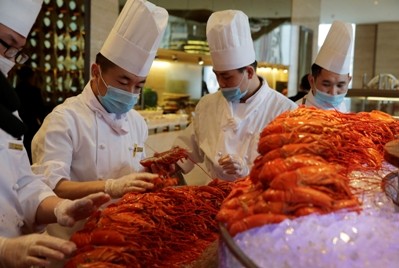China’s growing consumption for Boston lobster has increased the sales of the booming U.S. industry, mostly in Maine and Massachusetts, which are engaged in the exportation of lobster to China.
The Boston Globe reported that China's high demand for Boston lobster was driven by the growing middle class in China who have money to spend and want a taste of good life.
The report said that more than $40 million worth of lobsters has been exported to China from various companies in Massachusetts and Maine, which are the main producers of the popular North Atlantic crustacean.
One of Maine's largest seafood exporters, Maine Coast Lobster, said that it has increased sales to China and other foreign markets in the past two years and invested more than $2 million to expand operations.
According to Wisertrade.org, a nonprofit research group monitoring international trade and business, lobster exports to China from New England have quadrupled since 2012.
The report added that China today accounts for 7.5 percent of the region's lobster exports, an increase of about 2.5 percent compared to two years ago.
According to the Globe report, the Chinese prefer the North Atlantic lobsters over Australian lobsters because they are cheaper. Another advantage of the North Atlantic is its meaty claws which Chinese consumers favor, proven by its popularity during the Chinese New Year celebration.
The report added that Chinese consumers also believe that the North Atlantic lobsters are healthier to eat and free from pollution.
Exporting lobster is a $500-million industry in Maine, but the state is careful on expanding exports since large catches in recent years have resulted in glut that drove prices low. Although large catches continue, the state is managing the fishery industry well.
Since 2012, Maine lobster exports to China have more than doubled. From about $8 million, it rose to more than $20 million last year.



























